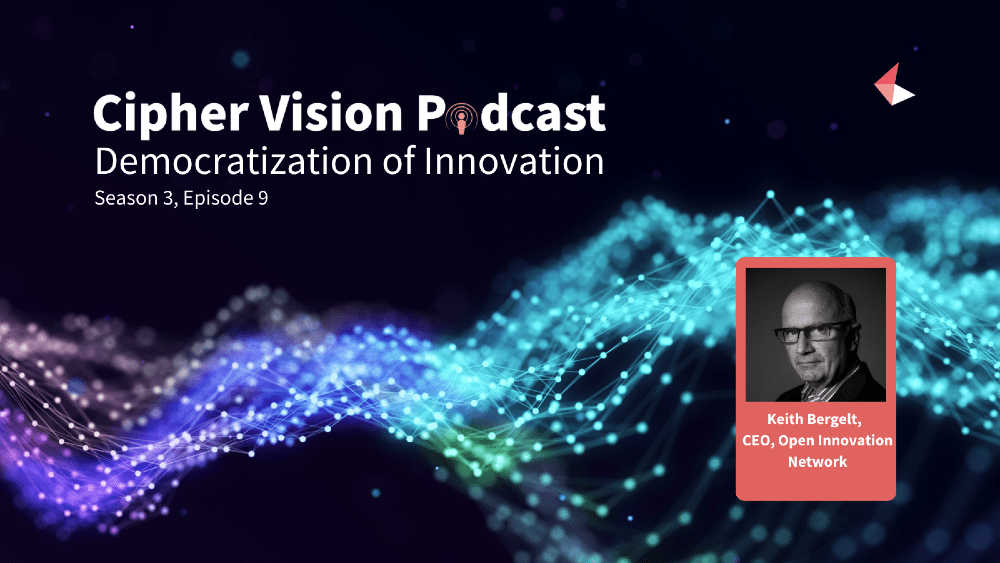Democratization of Innovation

Introduction
Episode 9 in Season 3 of the Cipher Vision Podcast series features Keith Bergelt, CEO, Open Invention Network (OIN).
Keith joined us to explore the relationship between IP and open source, sharing the benefits and challenges of open source collaboration and Open Invention Network’s role in preserving patent freedom.
He chats to the hosts of the Cipher Vision podcast, who are:
- Francesca Levoir, Head of Marketing, LexisNexis Cipher
- Nigel Swycher, CEO, LexisNexis Cipher
Conversation Highlights
What is the Open Invention Network?
The OIN is a guardian organization, it preserves freedom of action, freedom to operate and freedom to collaborate.
What open source allows us to do is to bring the outside in, to learn and bring technologies together and build on each other’s ideas.
We can build on each other’s ideas to create something we couldn’t create independently.
How do open source collaboration and intellectual property work together?
It’s a more constructive way to approach licensing.
You can’t escape from it, no matter how much your intent is to be proprietary. Pretty much every organization that touches software now is utilizing some open source code.
We now have to be much more careful and thoughtful with the capital that we have in the intellectual property space, to figure out that connection between differentiation and filings.
How does the Open Invention Network work?
OIN essentially has no business model other than to be able to support freedom of action and freedom to operate.
And so it is a model where companies agree to participate in a cross-license around the technology zone.
We are a trusted guardian to expand the scope of that license so that we can ensure that it is up to date, and that patent risk mitigation is occurring.
Collaboration is the modality that underlies open source. And that’s where I’ve always seen the power of this whole movement.
What does the future hold?
We’re also looking at emulating what we’ve accomplished in software in a new growth area, which is open source hardware.
I look at hardware as the next frontier, and an opportunity space. Whether it’s in tooling or whether it’s in actual design, development and production.
We may invent something, we may design something, and then we make that design available to someone else so that they don’t have to design something from the ground up.
Does that mean that the risk to software has gone away?
The risk has now moved away from companies that recognize their dependence and interdependence to Patent Assertion Entities (PAEs).
PAEs don’t necessarily have an issue with open source, they just have a business model that supports monetization. They get an asset in one day, they want to monetize it the next day. It’s a very simple, straightforward model.
PAEs are essentially creating noise, and we want to reduce the friction. We want to limit what PAEs can do to slow or stall the progress of Linux and open source at this stage.
Keith’s key takeaway
Collaborative development is here to stay.
It’s part of a social movement and open source is a critical driver in innovation in a way that we have never, as a human population, been able to master before.
We need to be able to put people in a situation where they can participate no matter where they are in the world in this global programme of innovation through open source.
Nigel’s key takeaway
It’s easy to mistakenly think of open source as a world without intellectual property. The existence of the Open Invention Network and its member organizations highlights the reality that nothing could be further from the truth.
While attitudes have changed considerably, patents still pose a real threat to open source innovation, and more recently from non-practicing entities.
OIN helps ensure intellectual property continues to serve all innovators, and that patents are not used to stifle the innovation that is vital to the digital economy.



